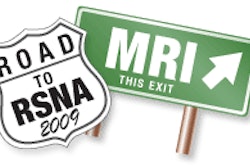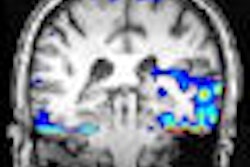Tuesday, December 1 | 10:50 a.m.-11:00 a.m. | SSG08-03 | Room E451A
A phase II clinical study on the use of oral manganese as an MRI contrast agent to detect liver metastases is showing early promising results, according to this scientific session presentation by Dutch researchers.Researchers at Radboud University Nijmegen Medical Centre in the Netherlands said that so far the agent has proved safe and able to improve visualization of liver metastases by increasing the signal-to-noise ratio and contrast-to-noise ratio of the liver to metastases.
According to lead study author and radiologist Dr. Helena Dekker, the oral manganese contrast agent is supplied in powder form in two parts. One part contains manganese and the other part is L-alanine and vitamin D3 (uptake promoters). The two substances are mixed and diluted in a total of 400 mL of cold tap water. After the contrast has been ingested, it is absorbed by the digestive system and enters the hepatic portal system. It is then carried through the portal vein into the liver before it reaches the circulation.
"The manganese is taken up by normal-functioning hepatocytes, but not by liver metastases," Dekker said. "The signal intensity on T1-weighted images increases in normal functioning hepatocytes, while the liver metastases do not enhance."
The process increased the contrast between normal liver tissue and metastases and induced a distinct difference in signal-to-noise ratio and contrast-to-noise ratio of the liver parenchyma between the pre- and postcontrast images at three hours follow-up in the study patients. The result is a significant increase in the number of detected liver metastases on the postcontrast MR images at both 1.5-tesla and 3-tesla MRI.
For the trial, 18 patients with known liver metastases were examined with MRI at 1.5 tesla and 3 tesla with the contrast agent. The mean signal-to-noise ratio of the liver improved after contrast administration at 1.5 tesla and 3 tesla by a factor of 1.7. The mean contrast-to-noise ratio of the liver-to-metastases improved after contrast administration at 1.5 tesla and 3 tesla by a factor of 3.2 and 3.0, respectively.
"Manganese is actively excreted through hepatocytes into the bile and only minimal amounts are excreted through the kidneys," Dekker said. "Administration of this contrast agent has the advantage of avoiding the potential side effects associated with intravenous agents," such as renal function impairment and nephrogenic systemic fibrosis.
So far, she said, no serious adverse events have occurred, though nonserious adverse reactions of abdominal pain and vomiting have happened. Researchers plan to proceed to final phase III evaluation in early 2010.



.fFmgij6Hin.png?auto=compress%2Cformat&fit=crop&h=100&q=70&w=100)




.fFmgij6Hin.png?auto=compress%2Cformat&fit=crop&h=167&q=70&w=250)











